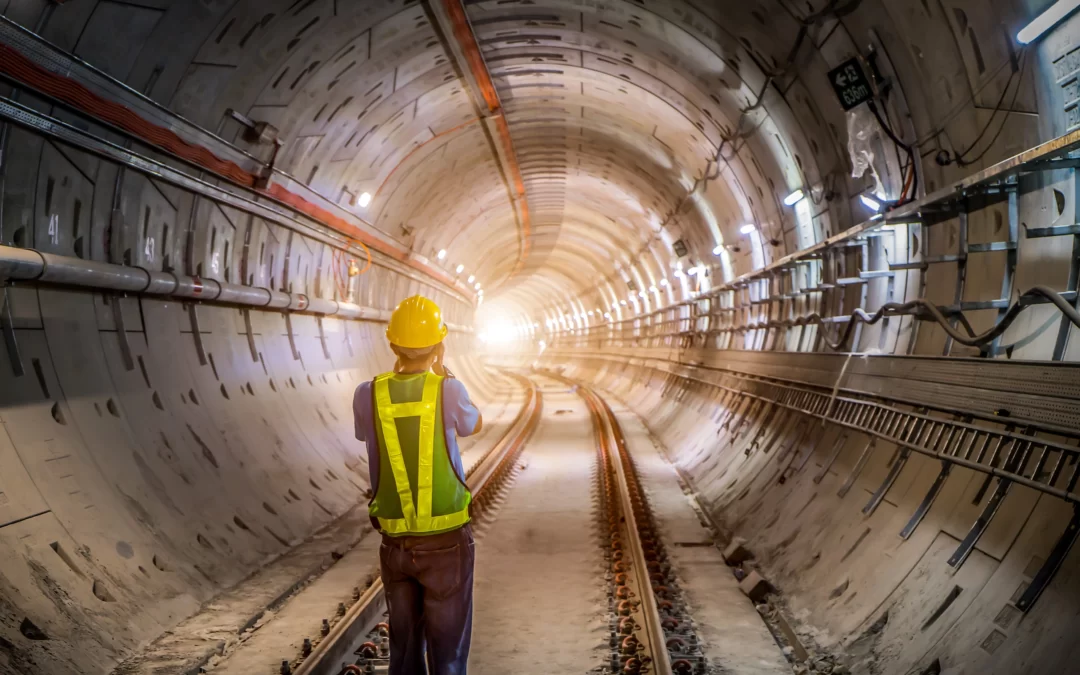Compensation for Land Acquired for Underground Rail Tunnels
Compensation for land compulsorily acquired for a railway tunnel will only be possible where a claimant can satisfy one of the criteria set out in clause 2 of Schedule 6B of the Transport Administration Act 1988 (Transport Administration Act). Relevantly, leaving aside mining-related claims, a claimant will need to establish that: (a) the surface of the overlying soil is disturbed or (b) the support of that surface is destroyed or injuriously affected by the construction of those facilities. A similar gateway test applies for the compulsory acquisition of land below the surface for non-rail tunnel projects as set out in s62(2) of the Land Acquisition (Just Terms Compensation) Act 1991 (Just Terms Act). The recent authority of Expandamesh Pty Ltd v Sydney Metro (No 3) [2022] NSWLEC 137 is a useful reminder of the challenges faced by claimants for compensation for the loss of stratum associated with a rail tunnel.
Expandamesh Pty Ltd v Sydney Metro (No 3)
Sydney Metro acquired a horizontal stratum of land owned by Expandamesh, some 19 metres below the surface. Expandamesh contended that, as a result of the acquisition, the surface of its land was relevantly disturbed and, secondly, the support of the surface of its land was injuriously affected by the construction of underground rail facilities, satisfying the gateway criteria set out in clause 2(a) and (b) of Schedule 6B of the Transport Administration Act.
Expandamesh claimed:
- compensation of $20,000 pursuant to s 55(a) for the market value for the acquired land.
- compensation of $405,000 pursuant to s 55(f) for the decrease in the value of the residue land by reason of the additional delays, uncertainty cost in redeveloping the land due to the requirement of the concurrence of the rail authority to any development application on the residue land.
- disturbance costs (legal, valuation and planning fees).
Sydney Metro contended that the surface of Expandamesh’s land was not disturbed or the support of the surface in any material respects injuriously affected by the construction of the underground rail facilities. Any measurable surface disturbance, potentially in the order of 1-2mm, was ‘trivial’ and did not qualify as disturbed soil for the purposes of the test. On that basis, Sydney Metro contended that Expandamesh had no legal grounds to claim compensation. Sydney Metro further contended that, even if it could be established that clause 2(a) or (b) of Schedule 6B were satisfied, Expandamesh was not entitled to compensation because:
- the substratum of the acquired land had no market value; and
- the carrying out of the public purpose (incorporating a new metro station) effectively increased the future development potential of the site, resulting in an uplift in the value of the site (betterment), significantly greater than any additional cost which would need to be incurred as a consequence of the presence of the tunnels for the realisation of that increased development potential
Disturbed and Injuriously Affected
After hearing extensive engineering evidence from the parties, the Court held that, on the balance of probabilities, the surface of Expandamesh’s land had been disturbed by at least 1.5 millimetres as a consequence of the construction of the two rail tunnels under Expandamesh’s land, and satisfied clause 2(a) of Schedule 6B of the Transport Administration Act.
In relation to the criterion under clause 2(b) of Schedule 6B, the Court was not satisfied that the site had been injuriously affected or in any respects destroyed.
Further, the Court held that it was not necessary to satisfy clause 2(b) in connection with satisfying the criteria set out in clause 2(a), it being a stand-alone gateway criterion.
On that basis, the applicant had satisfied the requisite criteria to proceed with its claim. The Court observed, forebodingly for the applicant, that the triggering of the ability to claim compensation does not, however, automatically result in success for such a claim.
Market Value
The applicant’s valuer applied a market value of $20,000 as a consequence of the ‘blot on title’ on the applicant’s residue land, akin to the acquisition of an easement by Sydney Metro. The Court rejected that approach, as it implied the ‘blot on title’ was over land owned by the claimant, which it was not.
However, the Court accepted that, as a matter of ‘first principles’ under s 56(1) of the Just Terms Act, and recognising that there is no particular market for substratum land, the hypothetical owner of the site, if approached by a hypothetical purchaser of a substratum, would not simply say, in an altruistic fashion, to the hypothetical purchaser: “Please take it, I don’t want to be paid for it”.
In the circumstances, the Court accepted the applicant’s market value of $20,000.
Delays, Risk and Additional Redevelopment Costs
The respective engineers agreed that there would be no impact on the tunnels associated with any redevelopment of the site and accepted that some additional geotechnical monitoring would be necessary, with an estimated $140,000 in costs. The applicant’s engineer contended that, in addition, a purchaser would need to be mindful of additional requirements potentially imposed by the rail authority in relation to any future redevelopment of the site, potentially resulting in further monitoring and management costs, in excess of $400,000.
The Court held that “the hypothetical prudent purchaser would conclude that the risk was small under the circumstances (indeed, so small as to be negligible) and would only make allowance for the incurring of the agreed quantum of $140,000, as that which would necessarily be incurred to obtain the monitoring data that would be required by the concurrence consent authority before that rail authority would give its approval…”
Increase or Decrease in the Value of the Residue Land
The applicant claimed that, other than future monitoring and potential compliance costs, there would be no appreciable premium paid for the residue land as at the date of acquisition as a consequence of the public purpose.
Sydney Metro contended to the contrary, arguing that the applicant’s residue land, as at the date of acquisition, would attract a premium value on account of the public purpose, for two reasons. Firstly, the residue land will be situated 300m from a new railway station (directly related to the rail tunnel). Secondly, the new railway station will be the catalyst for a future rezoning which will apply to the applicant’s residue land. Sydney Metro contended that an uplift in market value in the order of 10% would apply.
The Court agreed, concluding that the two aspects of ‘betterment’ identified by Sydney Metro would result in the hypothetical purchaser paying a premium for the site as at the date of acquisition, with that premium (in the order of $800,000) being significantly more than any future costs of additional geotechnical monitoring required to redevelop the site in the future. On that basis, the Court rejected the applicant’s s 55(f) claim.
Judgment
The applicant was awarded $20,000 for its market value claim and its disturbance costs. The Court ordered Sydney Metro to pay the applicant’s costs of the proceedings.
Comment
The key takeaway of the judgment in Expandamesh is that, even where some degree of soil disturbance can be established arising from the acquisition of a stratum of land for a rail tunnel, a claim will only genuinely succeed where actual and material loss can be quantified in terms of the existing or future development of the remaining land, with those losses to be carefully weighed against any possible increase in the value of the remaining land associated with the public purpose, to be offset against the losses as a consequence of s 55(f) of the Just Terms Act. In the case of Expandamesh, the betterment uplift ultimately and dramatically trumped any actual or foreshadowed losses incurred by the applicant as a result of the tunnel.
The contents of this publication are for reference purposes only. This publication does not constitute legal advice and should not be relied upon as legal advice. Specific legal advice should always be sought separately before taking any action based on this publication.
Liability limited by a scheme approved under Professional Standards Legislation.
Authors: Anthony Perkins & Claire Parsons


